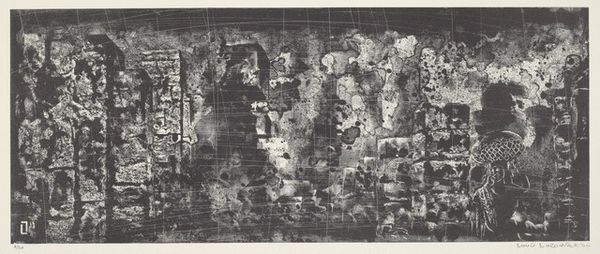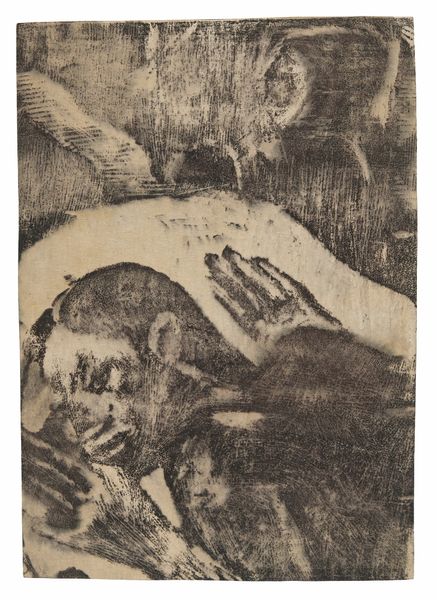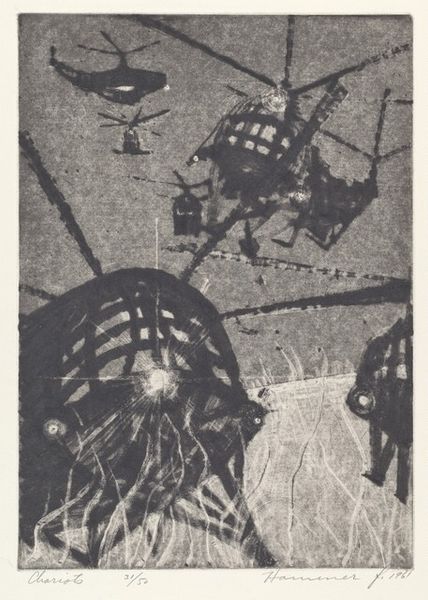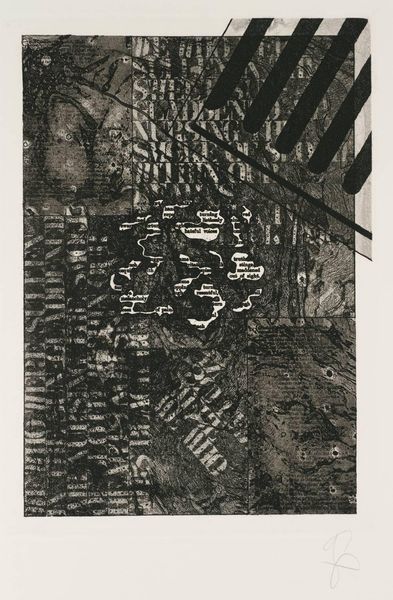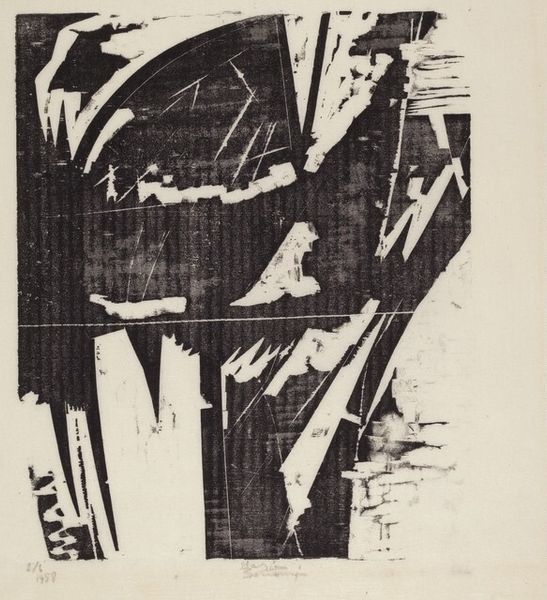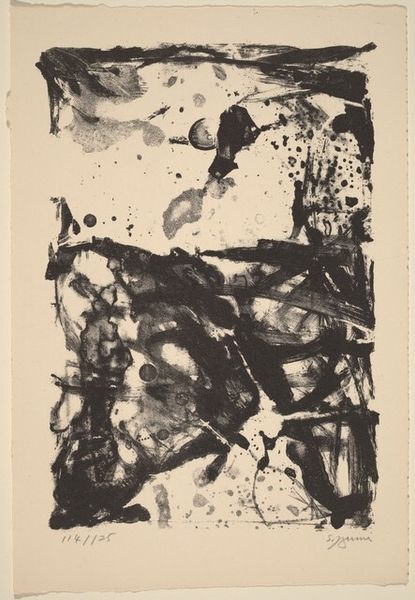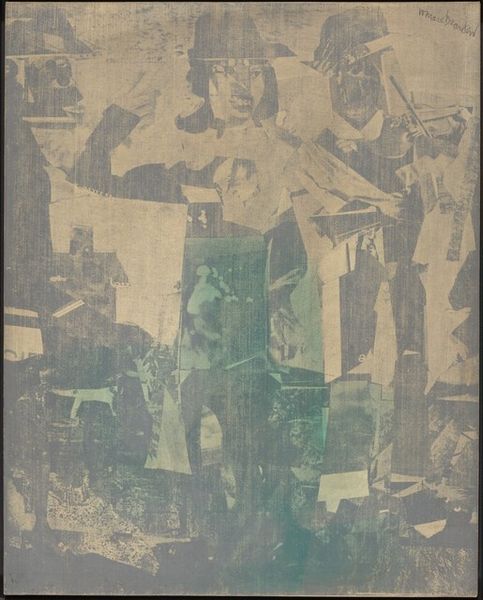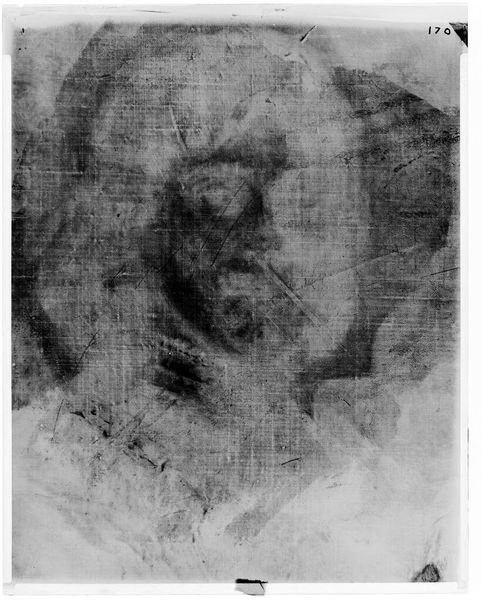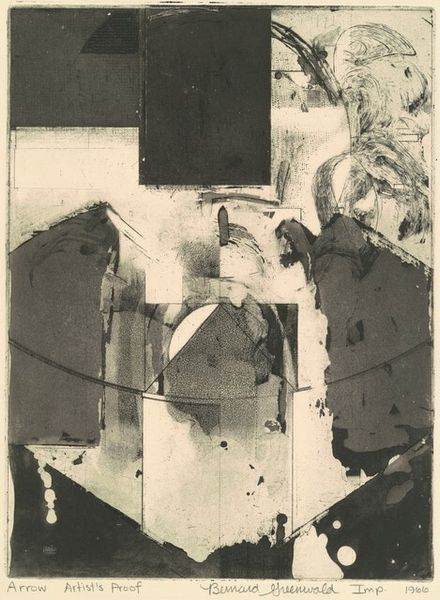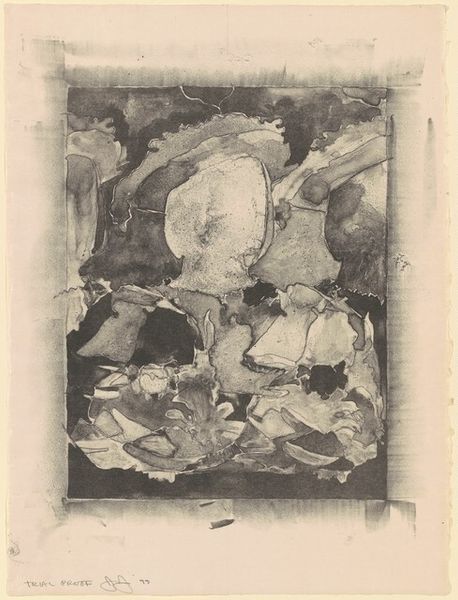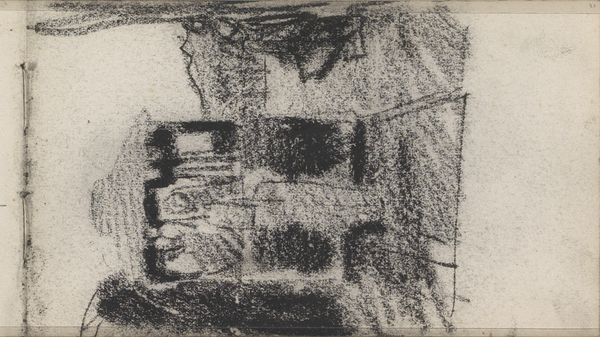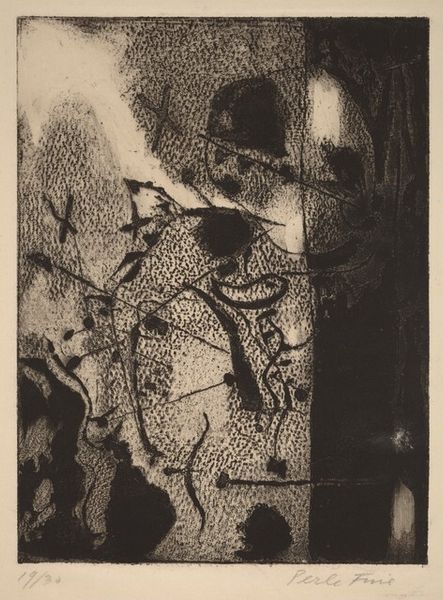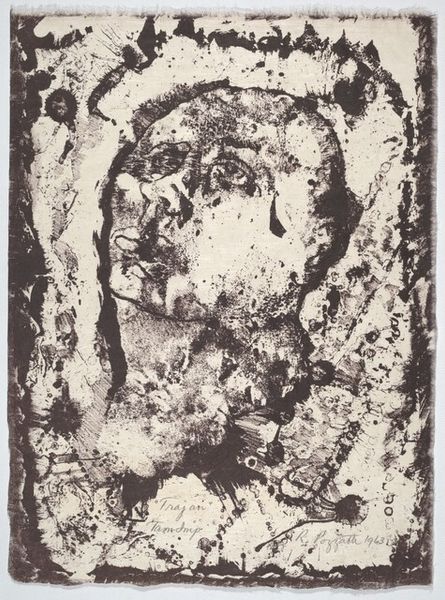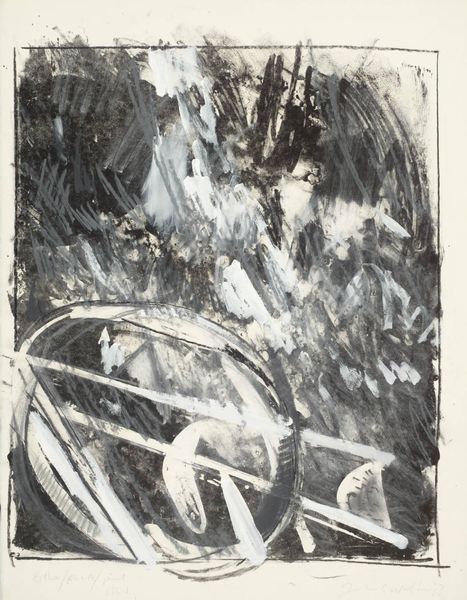
print, etching
# print
#
etching
#
geometric
#
abstraction
#
line
#
modernism
Copyright: National Gallery of Art: CC0 1.0
Curator: Here we have Bernard Greenwald's 1965 etching and print entitled, "Circle." Editor: It feels… chaotic, doesn’t it? Like peering into a rainstorm viewed through fractured glass. The varying textures are quite jarring. Curator: Precisely. Notice how Greenwald juxtaposes the rigidity of geometric shapes—lines, squares—with the fluid, almost uncontrolled textures achieved through the etching process. See how the circle motif dominates, yet remains incomplete, interrupted. Editor: I can't help but wonder, what statements does it make during a time rife with societal flux? Is it a comment on fragmentation, a response to the overwhelming information streams or the socio-political conflicts that fractured society then? Curator: I would propose that its value lies primarily in Greenwald's formal innovation, not as direct political commentary. It presents us with an unresolved visual dialectic, the push and pull between the planned and the accidental. The interplay of light and shadow contributes depth—inviting the eye to constantly readjust and discover new details. Editor: The eye is drawn, sure, but is also forced to contend with disjuncture, like a societal puzzle of inequality, misrepresentation and more. Are these incomplete forms reaching toward revolution or resolution? I wonder about accessibility as well. Whose story gets prominence? Is it, rather, representative of its exclusionary, privileged art world context? Curator: I see your points. However, looking purely at its structural components, Greenwald compels us to contemplate the relationship between control and chance in art. Look at that fine, etched crosshatching in the squares and grids which contrast so remarkably with the wild, swirling strokes. It's about the method, you see. Editor: While Greenwald’s formal method is noteworthy, that alone is, for me, insufficient for appreciating the piece. Understanding modernism is, at least partially, to acknowledge a responsibility to represent unheard narratives. As for Greenwald, his "Circle" prompts vital queries about visibility, agency, and inclusion, even if he wasn't intentionally thinking about that at the time. Curator: An intersection of design and execution – its effect comes from that. Editor: Precisely. Perhaps "Circle's" lack of resolution pushes us, its viewers, towards those ends.
Comments
No comments
Be the first to comment and join the conversation on the ultimate creative platform.
